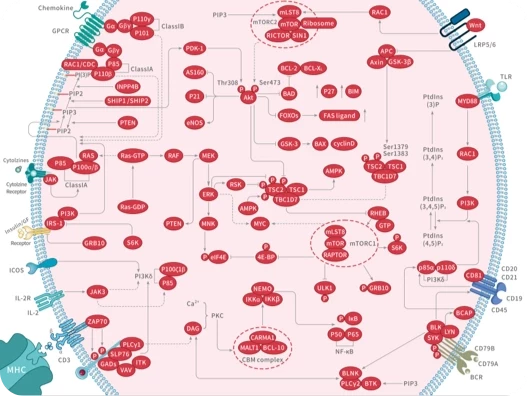- 全部删除
 您的购物车当前为空
您的购物车当前为空
购物车
姜花属
15,16-Epoxy-12R-hydroxylabda-8(17),13(16),14-triene
TN263161597-55-5
15,16-Epoxy-12R-hydroxylabda-8(17),13(16),14-triene 是一种天然产物,可用于生命科学领域的相关研究。其产品编号为 TN2631,CAS号为 61597-55-5。
- ¥ 3940
规格
数量
Isocoronarin D
TN4273138965-88-5
Isocoronarin D is a main active ingredient for inducing death of the tested cancer cells, it possesses a wide anti-cancer capability. Isocoronarin D may have potential chemopreventive activity, it can activate antioxidant response element (ARE) (EC50 57.6 ± 2.4 uM). It also shows the highest Hb F induction effect of 1.6-fold at 20 microM.
- ¥ 13650
规格
数量
Hedycoronen A
TN41901383441-73-3
Hedycoronen A and hedycoronen B have the potential anti-inflammatory benefits, they are potent inhibitors of LPS-stimulated interleukin-6 (IL-6) and IL-12 p40, with IC(50) ranging from 4.1±0.2 to 9.1±0.3 uM, they also show moderate inhibitory activity on
- ¥ 3940
规格
数量
Villosin
TN5233160598-92-5
Villosin exhibits potent cytotoxic activity , it may be used as a potential lead molecule for antitumor therapeutic development. Villosin shows inhibitory effects against nitric oxide production in LPS and IFN-γ-induced RAW 264.7 murine macrophages with I
- ¥ 12500
规格
数量
Yunnancoronarin A
TN5274162762-93-8
Yunnancoronarin A shows cytotoxicity against the lung adenocarcinoma cells A549 and leukemia cells K562, with the IC(50) value of 2.20 microM.
- 待询
规格
数量
ar-Curcumene
TN34364176-06-1
ar-Curcumene has antiinflammatory activity, it could be used as antiinflammatory drugs in respiratory infections. ar-Curcumene is effective as oviposition deterrents against Anopheles stephensi, Aedes aegypti, and Culex quinquefasciatus, it can be conside
- ¥ 5980
规格
数量
Coronarin A
TN3706119188-33-9
Coronarin, A, B, C, and D are cytotoxic prinicples from the rhizomes of Hedychium coronarium, Zingiberaceae. Coronarin A exhibits good growth inhibition activities on HUVEC proliferation, it effectively suppresses the growth factor induced tube formation
- ¥ 5560
规格
数量
Hedychenone
TN418956324-54-0
Hedychenone has anti-inflammatory activity, it also shows potent in vitro cytotoxic activity against cancerous cells.
- ¥ 3710
规格
数量
Coronarin D ethyl ether
TN3709138965-89-6
Coronarin D inhibits NF-KB activation pathway, which leads to inhibition of inflammation, invasion, and osteoclastogenesis, as well as potentiation of apoptosis.It shows promising antifungal activity against C. albicans in vitro.
- ¥ 3090
规格
数量
Coronarin D methyl ether
TN5575157528-81-9
Coronarin D methyl ether has inhibitory effects on the increase in vascular permeability, nitric oxide production, and inducible nitric oxide synthase induction.
- ¥ 3090
规格
数量
Coronarin B
TN3707119188-38-4
Coronarin B has cytotoxic activity, it also has modest antiplasmodial activity.
- ¥ 3330
规格
数量
Coronarin D
TN3708119188-37-3
Coronarin D shows promising antifungal activity against C. albicans in vitro, the minimum inhibitory concentration (MIC) and the minimum fungicidal concentration (MFC) were 2 and 4 mg mL, respectively; it is active against tested Gram-positive bacteria, i
- ¥ 12500
规格
数量
转到第1页
/ 1 页

































